Fire apparatus manufacturers are the backbone of emergency response, designing and building the vehicles that protect communities, firefighters, and property from the devastation of fires. Without reliable fire apparatus manufacturers, fire departments would lack the specialized trucks, engines, and rescue vehicles needed to combat blazes, execute rescues, and handle hazardous materials incidents. In this comprehensive guide, we’ll explore everything about fire apparatus manufacturers: their types, key products, industry standards, factors to consider when choosing a manufacturer, emerging trends, and how to partner with the right provider for your department’s needs. Whether you’re a fire chief, procurement officer, or emergency services professional, this guide will equip you with the knowledge to navigate the world of fire apparatus manufacturers and make informed decisions that enhance your team’s effectiveness.
What Are Fire Apparatus Manufacturers?
Fire apparatus manufacturers are companies specializing in the design, engineering, and production of vehicles and equipment used by fire departments, emergency medical services (EMS), and rescue teams. Unlike general automotive manufacturers, fire apparatus manufacturers focus on creating custom-built vehicles tailored to the unique demands of emergency response—from high-pressure pumps and water tanks to advanced rescue tools and communication systems.
The role of fire apparatus manufacturers extends beyond production. They work closely with fire departments to understand their specific needs, whether it’s a compact fire engine for urban narrow streets, a rugged wildland fire truck for rural areas, or a specialized hazardous materials (HazMat) unit for industrial zones. Fire apparatus manufacturers also provide training, maintenance support, and aftermarket services to ensure their vehicles remain operational and safe throughout their lifespan (typically 10–20 years).
Fire apparatus manufacturers must adhere to strict safety and performance standards set by organizations like the National Fire Protection Association (NFPA), which outlines requirements for everything from structural integrity to pump capacity. This commitment to standards ensures that the vehicles produced by fire apparatus manufacturers meet the rigorous demands of emergency situations, protecting both firefighters and the public.
Types of Fire Apparatus Manufacturers
Fire apparatus manufacturers vary in size, specialization, and geographic focus. Understanding the different types can help fire departments identify which manufacturer aligns best with their needs:
Full-Service Fire Apparatus Manufacturers
Full-service fire apparatus manufacturers design and build a wide range of vehicles, from basic fire engines to complex rescue trucks and aerial ladder units. They handle every stage of production in-house, including engineering, fabrication, assembly, and customization.
- Examples: Pierce Manufacturing, Rosenbauer, Oshkosh Fire & Emergency.
- Advantages: One-stop shopping for all fire apparatus needs; seamless integration of components (e.g., pumps, ladders, and electronics); ability to create fully custom vehicles.
- Best For: Large fire departments with diverse needs (e.g., urban departments requiring engines, ladders, and HazMat units) or those seeking a single manufacturer for consistency in training and maintenance.
Specialized Fire Apparatus Manufacturers
Specialized fire apparatus manufacturers focus on a specific type of vehicle or niche market, leveraging expertise in areas like wildland firefighting, airport rescue, or marine fire suppression.
- Examples:
- Wildland: SVI Trucks, Westates Fire Apparatus.
- Airport: Emergency One (airport crash trucks).
- Marine: MetalCraft Marine (fireboats).
- Advantages: Deep expertise in their niche; vehicles optimized for specific environments (e.g., off-road capabilities for wildland trucks); innovative features tailored to unique challenges.
- Best For: Departments with specialized needs (e.g., rural fire districts fighting wildfires, airports requiring crash rescue vehicles).
Regional Fire Apparatus Manufacturers
Regional fire apparatus manufacturers operate within a specific geographic area, serving local and state fire departments. They often prioritize personalized service and quick delivery times.
- Examples: Ferrara Fire Apparatus (serving the U.S. Southeast), Spartan Emergency Response (Midwest-focused).
- Advantages: Familiarity with local regulations and climate conditions (e.g., snow-ready vehicles for Northern states); shorter lead times for delivery and maintenance; strong relationships with local dealers.
- Best For: Small to mid-sized departments looking for personalized support and timely delivery within their region.
International Fire Apparatus Manufacturers
International fire apparatus manufacturers operate globally, exporting vehicles to fire departments worldwide. They adapt their designs to meet regional standards and regulations.
- Examples: Rosenbauer (Austria), Magirus (Germany), Iveco Magirus (Italy).
- Advantages: Access to global innovation (e.g., European advancements in electric fire trucks); economies of scale that may reduce costs; ability to serve multi-national organizations (e.g., military bases).
- Best For: Departments seeking cutting-edge technology from global leaders or those operating in multiple countries.
Key Products from Fire Apparatus Manufacturers
Fire apparatus manufacturers produce a diverse range of vehicles, each designed for specific emergency scenarios. Here are the most common types:
Fire Engines (Pumper Trucks)
Fire engines are the workhorses of fire departments, designed to transport firefighters, water, and equipment to the scene of a fire. Fire apparatus manufacturers build them with:
- Water Tanks: 500–1,500 gallons capacity, depending on the model.
- Pumps: 750–2,000 gallons per minute (GPM) capacity to deliver water to hoses.
- Compartments: For storing hoses, nozzles, axes, and other tools.
- Customization: Options for 4x4 drivetrains (rural areas), compact designs (urban narrow streets), or hybrid/electric engines (for sustainability).
Fire apparatus manufacturers like Pierce and Rosenbauer offer fire engines with advanced features, such as computerized pump controls and integrated thermal imaging cameras.
Aerial Ladder Trucks
Aerial ladder trucks (or “ladder trucks”) are equipped with extendable ladders or platforms to reach high-rise buildings, rooftops, or difficult-to-access areas. Fire apparatus manufacturers design them with:
- Ladder Lengths: 50–100+ feet, with articulating or telescoping options.
- Platforms: Some models replace ladders with hydraulic platforms (cherry pickers) for rescue operations.
- Pump Integration: Many include pumps to deliver water through the ladder to upper floors.
Fire apparatus manufacturers like Oshkosh and Magirus specialize in aerial trucks with enhanced stability systems, allowing safe operation on uneven terrain.
Rescue Trucks
Rescue trucks are built to handle non-fire emergencies, such as car accidents, building collapses, and water rescues. Fire apparatus manufacturers equip them with:
- Specialized Tools: Jaws of Life, hydraulic cutters, winches, and jacks.
- Compartments: Organized storage for medical supplies, ropes, and breathing apparatus.
- Lighting Systems: High-intensity LED lights for night operations.
Specialized fire apparatus manufacturers like SVI Trucks produce rescue trucks with off-road capabilities for wilderness rescues.
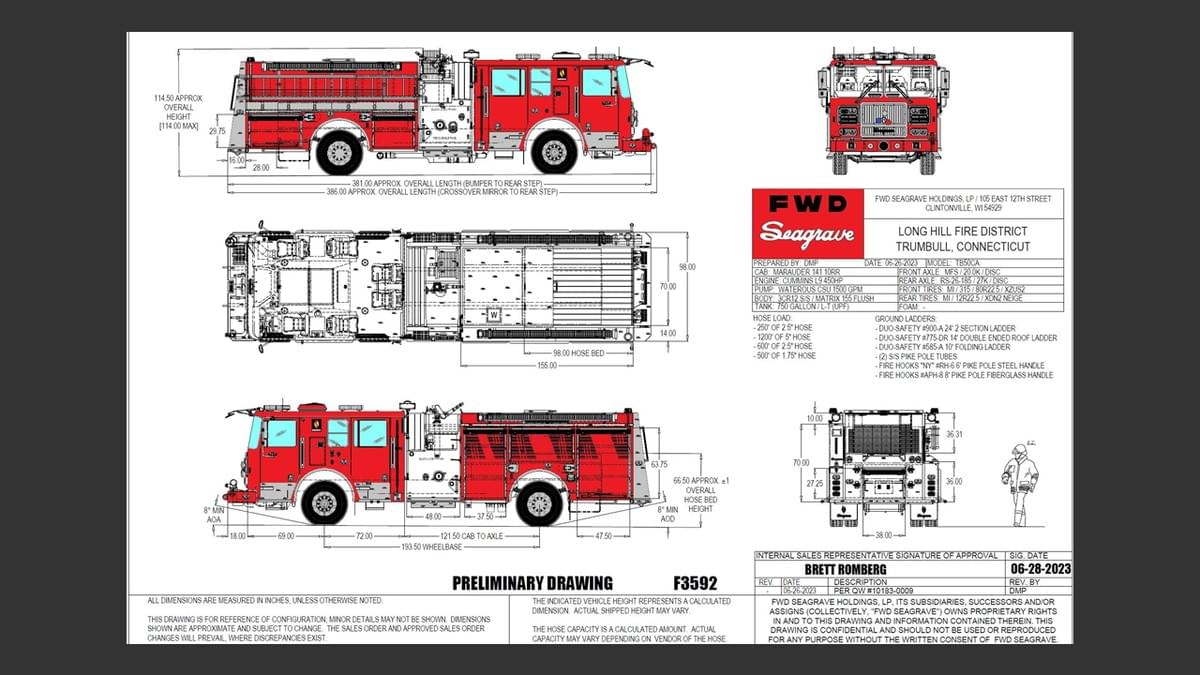
Hazardous Materials (HazMat) Units
HazMat units are designed to contain and clean up spills of dangerous substances (e.g., chemicals, fuels). Fire apparatus manufacturers build them with:
- Sealed Compartments: To store HazMat suits, detectors, and neutralizing agents.
- Ventilation Systems: To protect crews from fumes.
- Containment Tools: Booms, absorbents, and pumps for spill control.
Fire apparatus manufacturers like Emergency One offer HazMat units with advanced monitoring systems to detect toxic gases in real time.
Wildland Fire Trucks
Wildland fire trucks are rugged vehicles built for fighting fires in remote, off-road areas (forests, grasslands). Fire apparatus manufacturers design them with:
- 4x4 Drivetrains: For navigating rough terrain.
- Smaller Water Tanks: 200–500 gallons, with pumps optimized for low-pressure, high-volume delivery.
- Brush Guards: To protect against debris.
Fire apparatus manufacturers like Westates Fire Apparatus specialize in wildland trucks with lightweight designs for increased maneuverability.
Fireboats
Fireboats are used by coastal cities, ports, and waterfront communities to fight fires on ships, docks, or buildings near water. Fire apparatus manufacturers build them with:
- Marine-Grade Pumps: 5,000–20,000+ GPM capacity, drawing water directly from the ocean or river.
- Fire Monitors: Remote-controlled nozzles mounted on the deck for precise water delivery.
- Rescue Equipment: Diving gear, life rafts, and medical supplies.
MetalCraft Marine and Lake Assault Boats are fire apparatus manufacturers known for custom fireboats tailored to specific waterways.
Industry Standards for Fire Apparatus Manufacturers
Fire apparatus manufacturers must comply with strict standards to ensure their vehicles are safe, reliable, and effective. Key standards include:
NFPA 1901: Standard for Automotive Fire Apparatus
Published by the National Fire Protection Association (NFPA), NFPA 1901 is the most widely adopted standard for fire apparatus manufacturers. It covers:
- Structural Requirements: Frame strength, rollover protection, and door integrity to protect firefighters during accidents.
- Pump Performance: Minimum flow rates, pressure ratings, and durability tests for pumps.
- Electrical Systems: Wiring, batteries, and lighting must withstand vibration, water, and extreme temperatures.
- Safety Features: Seatbelts, emergency exits, and visibility enhancements (e.g., reflective striping).
Fire apparatus manufacturers must test their vehicles to meet NFPA 1901 before they can be sold in most U.S. states.
NFPA 1911: Standard for Wildland Fire Apparatus
Specific to wildland trucks, NFPA 1911 outlines requirements for:
- Off-road performance (traction, ground clearance).
- Water tank durability (to withstand rough terrain).
- Fire suppression systems optimized for grass and brush fires.
Fire apparatus manufacturers building wildland vehicles must certify compliance with NFPA 1911.
ISO Standards
International Organization for Standardization (ISO) standards, such as ISO 15400, apply to fire apparatus manufacturers globally. They cover:
- Design and testing of aerial devices (ladders, platforms).
- Safety requirements for rescue equipment integration.
Fire apparatus manufacturers exporting to Europe, Asia, or other regions often seek ISO certification to demonstrate quality.
Local Regulations
Fire apparatus manufacturers must also adhere to regional rules, such as:
- U.S. Department of Transportation (DOT) standards for vehicle weight, lighting, and emissions.
- European Union (EU) regulations on emissions (Euro 6) and safety features.
- Country-specific requirements (e.g., Australia’s strict off-road standards for rural fire trucks).
How Fire Apparatus Manufacturers Design Custom Vehicles?
Fire departments have unique needs based on their jurisdiction’s geography, population, and risks. Fire apparatus manufacturers excel at creating custom vehicles to address these needs. Here’s the design process:
Needs Assessment
The process begins with a consultation between the fire department and fire apparatus manufacturers. Key questions include:
- What types of emergencies are most common (e.g., high-rise fires, wildfires, car accidents)?
- What is the terrain like (urban, rural, mountainous, coastal)?
- How many firefighters need to be transported?
- What equipment must be carried (e.g., ladders, HazMat gear, rescue tools)?
Fire apparatus manufacturers use this information to create a preliminary design.
Engineering and Prototyping
Fire apparatus manufacturers’ engineering teams translate the department’s needs into technical specifications. They use computer-aided design (CAD) software to model the vehicle, ensuring it meets NFPA standards and performance goals.
For complex designs, fire apparatus manufacturers may build a prototype or 3D model to test features like:
- Weight distribution (critical for aerial trucks).
- Compartment layout (to ensure tools are easily accessible).
- Pump performance under different conditions.
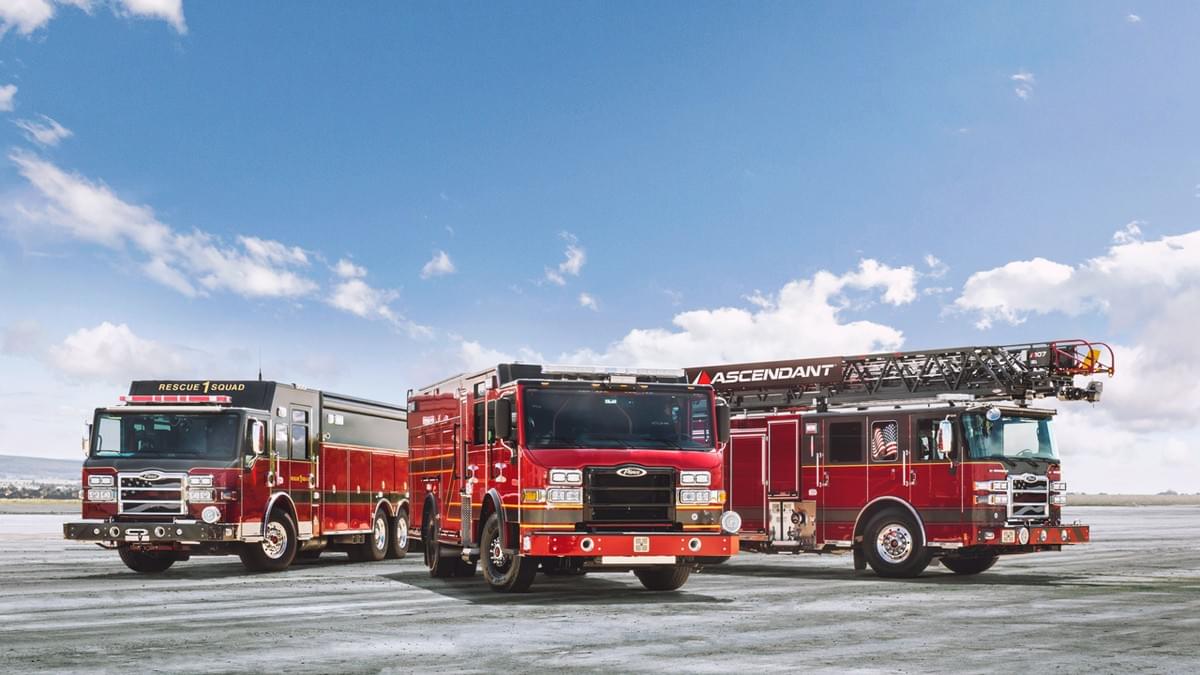
Customization Options
Fire apparatus manufacturers offer a range of customizations, including:
- Cab Configuration: Crew cabs for 4–6 firefighters or extended cabs for additional storage.
- Equipment Integration: Mounting systems for specific tools (e.g., Jaws of Life, thermal cameras).
- Technology Add-Ons: GPS, two-way radios, and mobile data terminals for real-time incident updates.
- Aesthetic Choices: Department colors, logos, and reflective striping.
Testing and Approval
Before production, fire apparatus manufacturers test the design to ensure it meets NFPA standards and the department’s requirements. Tests include:
- Pump performance (flow rate, pressure).
- Aerial ladder extension and stability.
- Crash simulations (to verify rollover protection).
The fire department reviews the test results and provides feedback, which fire apparatus manufacturers incorporate into the final design.
Production and Delivery
Once approved, fire apparatus manufacturers begin production. Depending on complexity, a custom vehicle can take 6–18 months to build. Fire apparatus manufacturers provide regular updates to the department during production and conduct a final inspection before delivery.
Upon delivery, fire apparatus manufacturers often provide training for the department’s crew on operating the vehicle’s features, from pump controls to aerial ladder operation.
Factors to Consider When Choosing Fire Apparatus Manufacturers
Selecting the right manufacturer is critical for ensuring your department gets a reliable, high-performance vehicle. Here are key factors to evaluate:
Reputation and Experience
Look for fire apparatus manufacturers with a proven track record. Consider:
- How long have they been in business? (Established manufacturers like Pierce have 100+ years of experience.)
- What do other fire departments say? Read reviews or ask for references from departments with similar needs.
- Have they won industry awards for innovation or quality? (e.g., Rosenbauer’s electric fire truck, the RT, won a 2023 innovation award.)
Product Range and Specialization
Choose fire apparatus manufacturers whose products align with your needs:
- If you need a wildland truck, prioritize manufacturers with expertise in off-road vehicles.
- For a combination of engines and aerial trucks, full-service manufacturers may offer better integration.
Compliance with Standards
Verify that fire apparatus manufacturers certify their vehicles to NFPA, ISO, and local standards. Ask for documentation of compliance, as non-certified vehicles may fail inspections or lack critical safety features.
Customization Capabilities
Assess whether fire apparatus manufacturers can accommodate your specific needs:
- Do they offer flexible cab configurations, equipment mounting, or technology integration?
- Can they adapt designs to your jurisdiction’s unique challenges (e.g., narrow streets, extreme temperatures)?
Lead Times and Delivery
Fire apparatus manufacturers’ production schedules vary. Ask:
- How long will it take to build your custom vehicle?
- Do they have a history of meeting delivery deadlines?
- Can they expedite production if needed (e.g., after a vehicle is damaged in an accident)?
Maintenance and Support
Post-purchase support is critical. Evaluate fire apparatus manufacturers’:
- Warranty coverage (typically 1–5 years for parts and labor).
- Network of service centers (important for rural departments needing local repairs).
- Availability of replacement parts (delays in parts can keep a truck out of service for weeks).
- Training programs for your crew (ensure they can operate the vehicle safely and efficiently).
Cost and Financing
While price shouldn’t be the only factor, it’s important to compare:
- Upfront costs (custom features will increase the price).
- Total cost of ownership (fuel efficiency, maintenance costs, lifespan).
- Financing options (many fire apparatus manufacturers offer leasing or installment plans for cash-strapped departments).
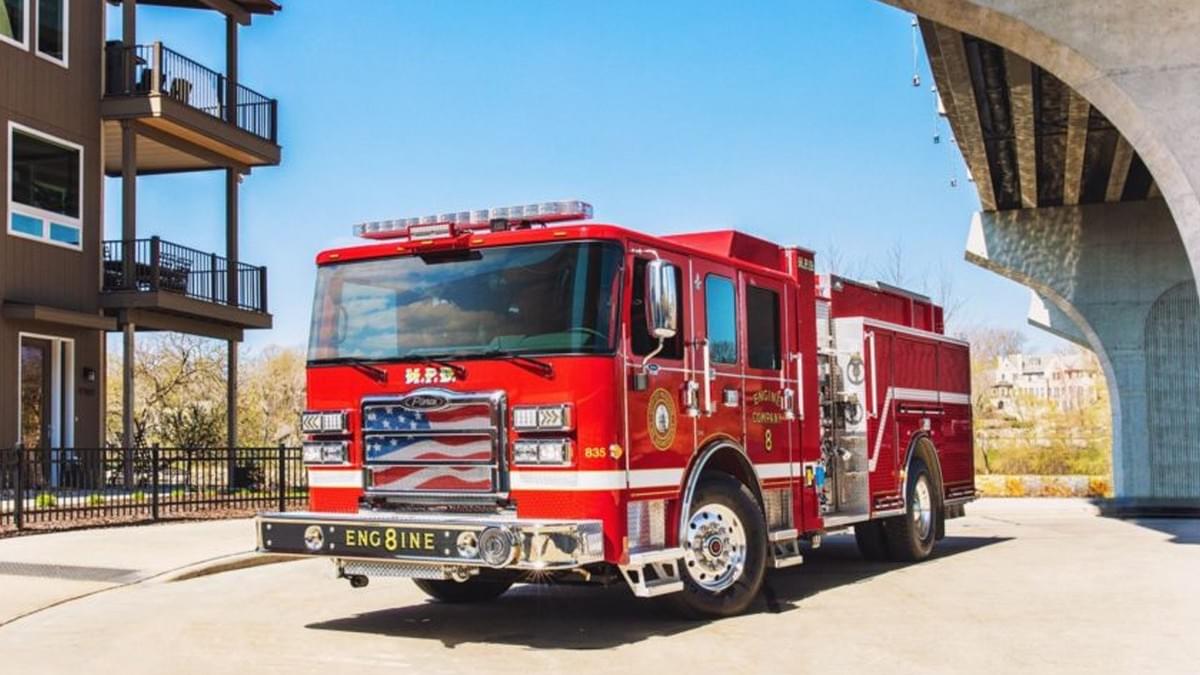
Emerging Trends in Fire Apparatus Manufacturing
Fire apparatus manufacturers are constantly innovating to meet evolving challenges, from climate change-driven wildfires to the demand for greener vehicles. Here are the latest trends:
Electric and Hybrid Fire Trucks
Fire apparatus manufacturers are leading the shift to electric and hybrid vehicles to reduce emissions and operating costs:
- Electric Models: Rosenbauer’s RT (Revolutionary Technology) is a fully electric fire engine with a 100-mile range and fast-charging capability. It produces zero emissions, making it ideal for urban areas with strict air quality regulations.
- Hybrid Systems: Pierce’s Hybrid Pumper combines a diesel engine with an electric motor, reducing fuel use by 30–40% during idle (common at fire scenes).
Fire apparatus manufacturers are working to improve battery technology, aiming to increase range and reduce charging times for electric models.
Advanced Safety Features
Fire apparatus manufacturers are integrating new technologies to protect firefighters:
- Collision Avoidance Systems: Cameras and sensors that alert drivers to pedestrians, other vehicles, or obstacles (critical in chaotic emergency scenes).
- Heat Detection: Sensors in the cab that warn of excessive heat (e.g., from a nearby fire) and automatically activate cooling systems.
- Ergonomic Design: Adjustable seats, anti-fatigue flooring, and easier-to-reach controls to reduce injuries during long shifts.
Smart Vehicle Technology
Fire apparatus manufacturers are adding connectivity features to enhance situational awareness:
- Internet of Things (IoT) Integration: Sensors that monitor vehicle health (e.g., engine temperature, pump performance) and send alerts to maintenance teams before breakdowns occur.
- Real-Time Data Sharing: Vehicles that transmit location, water levels, and crew status to incident command centers, improving coordination during large-scale emergencies.
- Augmented Reality (AR): Aerial ladder trucks with AR displays that overlay building schematics or heat maps onto the operator’s view, aiding in rescue planning.
Wildfire-Specific Innovations
As wildfires become more frequent and intense, fire apparatus manufacturers are developing specialized solutions:
- High-Capacity Water Tanks: Wildland trucks with 1,000+ gallon tanks (double the traditional size) to extend time between refuels.
- Fire-Resistant Materials: Cabs and compartments made from heat-resistant alloys to protect crews from extreme temperatures.
- Unmanned Aerial Vehicle (UAV) Integration: Trucks equipped with drones to scout fire lines and identify hotspots, reducing the need for firefighters to enter dangerous areas.
Modular Designs
Fire apparatus manufacturers are creating modular vehicles that can be reconfigured for different missions:
- Swap-Out Compartments: Interchangeable tool modules that allow a single truck to serve as a pumper, rescue unit, or HazMat truck depending on the emergency.
- Expandable Cabs: Trucks with fold-out sections to carry additional crew members during large incidents, then collapse for normal use.
Modular designs from fire apparatus manufacturers reduce the need for multiple specialized vehicles, saving departments money and storage space.
Top Fire Apparatus Manufacturers: A Closer Look
To help you narrow down your options, here’s an in-depth look at some of the leading fire apparatus manufacturers, their specialties, and what sets them apart:
Pierce Manufacturing
Founded in 1913, Pierce Manufacturing is one of the most trusted fire apparatus manufacturers in North America. A subsidiary of Oshkosh Corporation, Pierce focuses on full-service production, offering everything from fire engines to aerial trucks and rescue units.
- Specialties: Custom fire engines with advanced pump technology; aerial ladder trucks with 100+ foot reach; hybrid and electric models (e.g., the Volterra electric pumper).
- Innovation: Pierce’s Enforcer cab is designed for ergonomics and safety, with features like reinforced roll cages and noise reduction technology to protect firefighters.
- Service Network: 70+ service centers across the U.S. and Canada, ensuring quick maintenance support.
- Best For: Urban and suburban fire departments needing reliable, customizable vehicles with strong local support.
Rosenbauer
Headquartered in Austria, Rosenbauer is a global leader among fire apparatus manufacturers, operating in 100+ countries. Known for innovation, Rosenbauer balances tradition with cutting-edge technology.
- Specialties: Electric fire trucks (RT model); airport crash rescue vehicles; wildland trucks; and fireboats.
- Innovation: The RT electric pumper, launched in 2020, is a game-changer, with zero emissions and a modular battery system that allows for quick swaps.
- Global Reach: Manufacturing facilities in Europe, North America, and Asia, enabling localized production for regional markets.
- Best For: Departments seeking eco-friendly options or international organizations needing consistent quality across multiple countries.
Oshkosh Fire & Emergency
Oshkosh Fire & Emergency (part of Oshkosh Corporation) is a powerhouse among fire apparatus manufacturers, specializing in aerial devices and heavy-duty vehicles.
- Specialties: Aerial ladder trucks (e.g., the Titan series with 135-foot ladders); airport rescue fire fighting (ARFF) vehicles; and military-grade fire apparatus.
- Innovation: Oshkosh’s Stinger ARFF truck can reach speeds of 70+ mph, critical for airport emergencies where every second counts.
- Durability: Vehicles are built with rugged frames and components, making them ideal for harsh environments (e.g., military bases, industrial sites).
- Best For: Airports, military installations, and departments needing high-performance aerial vehicles.
Ferrara Fire Apparatus
Based in Louisiana, Ferrara Fire Apparatus is a leading regional manufacturer serving the U.S. Southeast and beyond. They’re known for personalized service and quick turnaround times.
- Specialties: Custom fire engines; rescue trucks; and wildland units designed for swampy or coastal terrain (common in the Southeast).
- Local Focus: Engineers understand regional challenges, such as hurricanes and flooding, and design vehicles with features like water-resistant electronics.
- Flexibility: Ferrara offers short lead times (often 6–9 months for custom builds) compared to larger fire apparatus manufacturers.
- Best For: Small to mid-sized departments in the Southeast seeking tailored solutions and responsive support.
SVI Trucks
SVI Trucks is a specialized manufacturer focusing on wildland and rescue vehicles, making them a top choice for rural and off-road emergency response.
- Specialties: Wildland fire trucks with 4x4 drivetrains; rescue trucks with off-road capabilities; and custom HazMat units.
- Innovation: SVI’s Wildland Xtreme series includes features like reinforced bumpers, winches, and high-capacity water tanks for remote firefighting.
- Customization: Works closely with rural departments to design vehicles that fit tight budgets without sacrificing performance.
- Best For: Rural fire districts, forest services, and search-and-rescue teams operating in rough terrain.
MetalCraft Marine
MetalCraft Marine is a niche manufacturer specializing in fireboats, standing out among fire apparatus manufacturers for their marine expertise.
- Specialties: Custom fireboats ranging from 20-foot patrol boats to 100+ foot vessels for major ports.
- Engineering: Boats are designed for stability in rough water, with marine-grade pumps that can draw water from as deep as 20 feet.
- Integration: Fireboats can be equipped with aerial monitors, dive teams, and even medical bays for multi-mission use.
- Best For: Coastal cities, ports, and waterfront communities (e.g., New York City Fire Department, Vancouver Fire Rescue).
How to Work with Fire Apparatus Manufacturers: A Step-by-Step Process?
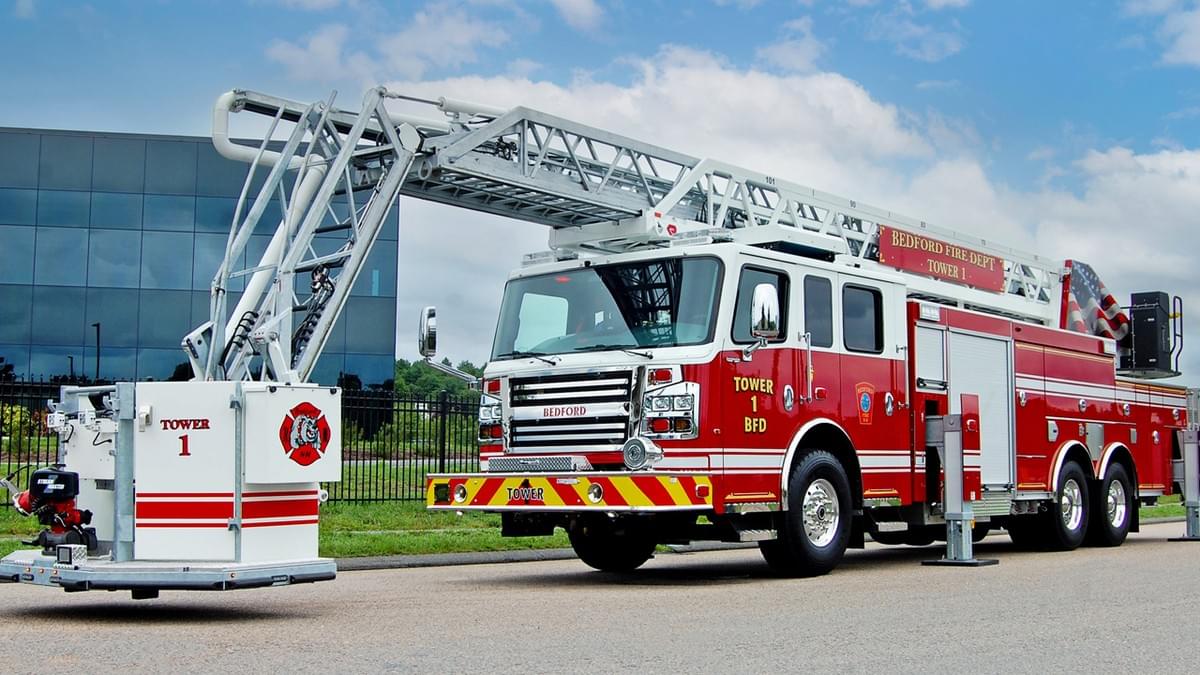
Partnering with fire apparatus manufacturers to build a custom vehicle involves several key steps. Following this process ensures you get a vehicle that meets your needs and stays within budget:
Step 1: Define Your Requirements
Before reaching out to fire apparatus manufacturers, document your department’s specific needs:
- Mission Profile: List the primary emergencies your department responds to (e.g., structure fires, wildfires, rescues).
- Vehicle Type: Decide whether you need a pumper, aerial truck, rescue unit, or another type.
- Capacity: Number of firefighters to transport, water tank size, pump GPM, and equipment storage needs.
- Terrain: Note any off-road, urban, or coastal challenges that affect vehicle design.
This document will help fire apparatus manufacturers provide accurate quotes and designs.
Step 2: Research and Shortlist Manufacturers
Use the factors outlined earlier (reputation, specialization, compliance) to create a shortlist of 3–5 fire apparatus manufacturers. Visit their websites, read case studies, and contact references from similar departments.
- Example: A rural department fighting wildfires might shortlist SVI Trucks and Westates Fire Apparatus, while an urban department might focus on Pierce and Rosenbauer.
Step 3: Request Proposals (RFPs)
Send a detailed request for proposal (RFP) to your shortlisted fire apparatus manufacturers. The RFP should include:
- Your requirements document.
- Budget constraints (if any).
- Timeline for delivery.
- Questions about their process, warranties, and support.
Fire apparatus manufacturers will respond with proposals outlining their design, cost, and timeline.
Step 4: Evaluate Proposals and Conduct Site Visits
Review each proposal carefully, comparing:
- Compliance with NFPA/ISO standards.
- Customization options (does the design meet your unique needs?).
- Total cost (including delivery, training, and maintenance).
- Lead times and warranty terms.
Narrow your list to 2–3 fire apparatus manufacturers and schedule site visits to their facilities. This allows you to:
- Inspect production quality.
- Meet the engineering team.
- Test drive demo vehicles (if available).
Step 5: Negotiate and Finalize the Contract
Once you’ve selected a manufacturer, negotiate the final details:
- Customization tweaks to the design.
- Payment terms (e.g., 30% upfront, 30% at production milestones, 40% on delivery).
- Training and support agreements (e.g., on-site training for your crew).
Fire apparatus manufacturers will provide a detailed contract outlining all terms, including penalties for missed deadlines or non-compliance with standards.
Step 6: Monitor Production and Provide Feedback
Stay in regular contact with fire apparatus manufacturers during production. Most will provide:
- Progress updates (e.g., photos of the frame, pump installation).
- Opportunities to review design changes (if issues arise).
Provide timely feedback to ensure the vehicle stays on track.
Step 7: Accept Delivery and Train Your Crew
Upon delivery, inspect the vehicle with the manufacturer’s representative to ensure it meets the contract specifications. Fire apparatus manufacturers typically offer:
- Hands-on training for drivers and crew (1–5 days, depending on vehicle complexity).
- Documentation (e.g., operation manuals, warranty papers, compliance certificates).
Schedule follow-up training if needed, and establish a maintenance schedule with the manufacturer’s service team.
Common Mistakes to Avoid When Working with Fire Apparatus Manufacturers
Even with careful planning, departments can make missteps when partnering with fire apparatus manufacturers. Here are pitfalls to avoid:
Choosing Based on Price Alone
Opting for the cheapest quote from fire apparatus manufacturers can backfire. A low-cost vehicle may lack critical safety features (e.g., NFPA-compliant roll cages) or use inferior components, leading to higher maintenance costs and shorter lifespans. Prioritize value over price.
Overlooking Local Support
A vehicle is only as good as the support behind it. Avoid fire apparatus manufacturers with no local service centers, especially if your department is in a rural area. Waiting weeks for a technician to travel to your location can keep your truck out of service during emergencies.
Underestimating Customization Needs
Don’t settle for a “one-size-fits-all” vehicle. Fire apparatus manufacturers thrive on customization, so clearly communicate your unique needs (e.g., “we need a compact engine to fit down Main Street’s narrow lanes”). Failing to do so may result in a vehicle that doesn’t work for your jurisdiction.
Ignoring Future Trends
Fire apparatus have long lifespans (10–20 years). When selecting a manufacturer, ask about their commitment to innovation (e.g., “can this truck be retrofitted with electric components later?”). Choosing fire apparatus manufacturers stuck in outdated designs may leave you with obsolete equipment.
Skipping Reference Checks
Always talk to other departments that have worked with the fire apparatus manufacturers on your shortlist. Ask about reliability, service response times, and whether the vehicle met expectations. A manufacturer with great marketing but poor real-world performance isn’t worth the investment.
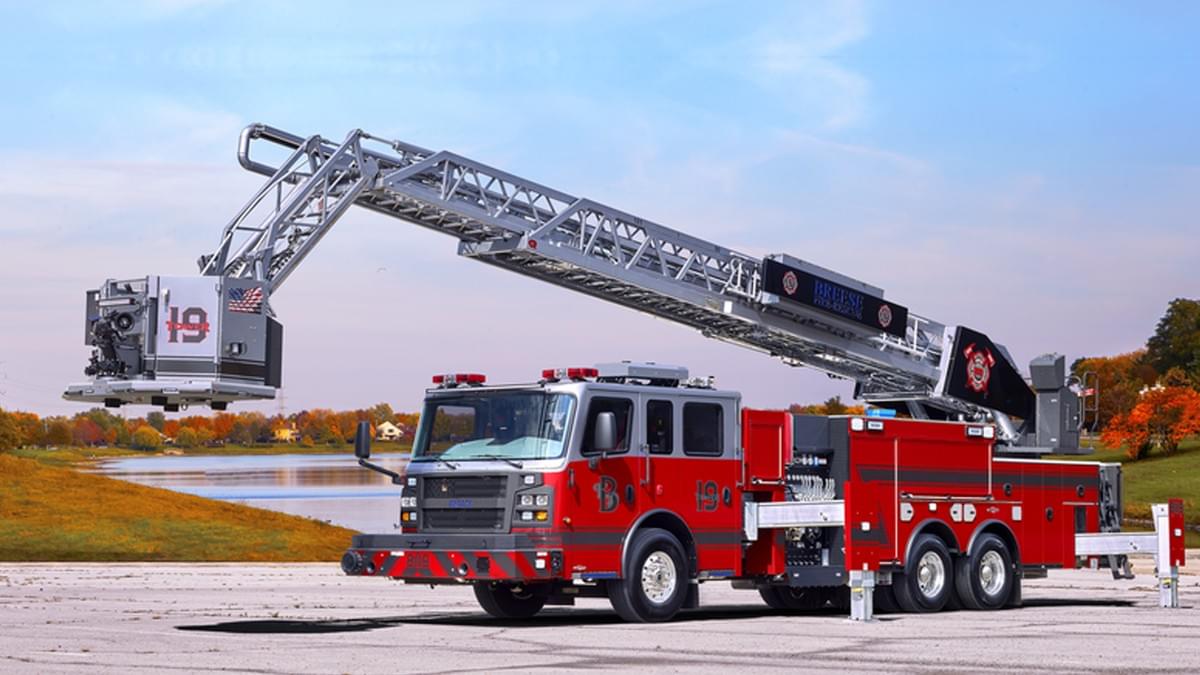
The Future of Fire Apparatus Manufacturers
The role of fire apparatus manufacturers will continue to evolve as emergencies grow more complex. Here’s what to expect in the next decade:
Sustainability as a Standard
Fire apparatus manufacturers will phase out diesel-only models, with electric and hybrid vehicles becoming the norm. Advances in battery technology (e.g., solid-state batteries) will extend range and reduce charging times, making electric trucks viable for even rural departments.
AI Integration
Artificial intelligence will play a larger role in vehicle design and operation. Fire apparatus manufacturers may incorporate AI-driven features like:
- Predictive maintenance (AI algorithms that forecast component failures before they occur).
- Autonomous navigation for specific tasks (e.g., remotely controlled wildland trucks entering high-risk areas).
- Real-time incident analysis (AI that uses vehicle sensors to recommend the best fire suppression strategy).
Focus on Firefighter Health
Fire apparatus manufacturers will prioritize features that protect firefighters’ long-term health, such as:
- Advanced air filtration systems to reduce exposure to smoke and toxins.
- Ergonomic designs that minimize musculoskeletal injuries.
- Mental health support tools (e.g., noise-canceling cabs to reduce stress during emergencies).
Global Collaboration
As wildfires, climate disasters, and pandemics become more global, fire apparatus manufacturers will collaborate across borders to develop standardized solutions. For example, a wildland truck designed for Australian bushfires may inspire similar models for U.S. Western states, with shared research on fire-resistant materials and pump technology.
Why Partnering with the Right Fire Apparatus Manufacturers Matters
The vehicles built by fire apparatus manufacturers are more than tools—they’re lifelines. A reliable, well-designed fire truck can mean the difference between containing a fire and a catastrophe, between rescuing a family and tragedy.
By choosing fire apparatus manufacturers that prioritize safety, innovation, and service, you’re investing in your community’s protection and your firefighters’ well-being. Whether you need a compact urban engine or a rugged wildland truck, the right manufacturer will work with you to create a vehicle that meets your needs today and adapts to tomorrow’s challenges.

Contact Us to Connect with Top Fire Apparatus Manufacturers
Not sure which fire apparatus manufacturers are right for your department? We’re here to help. Our team of emergency services experts has vetted the industry’s leading manufacturers, and we can connect you with options that align with your budget, mission, and location.
Fill out our online form with your department’s needs, and we’ll provide a curated list of fire apparatus manufacturers, along with quotes and case studies. Let us help you find the perfect partner to build the vehicles that protect what matters most.
Fire apparatus manufacturers are the unsung heroes of emergency response, combining engineering expertise with a commitment to saving lives. From the first pumper trucks of the early 1900s to today’s electric innovators, they’ve adapted to meet the changing needs of communities worldwide. As we look to the future, their role will only grow more critical, ensuring that fire departments have the tools to face whatever challenges come next. Whether you’re a fire chief planning your next purchase or a community member curious about how fires are fought, understanding fire apparatus manufacturers is key to appreciating the complexity and dedication behind every emergency response.
